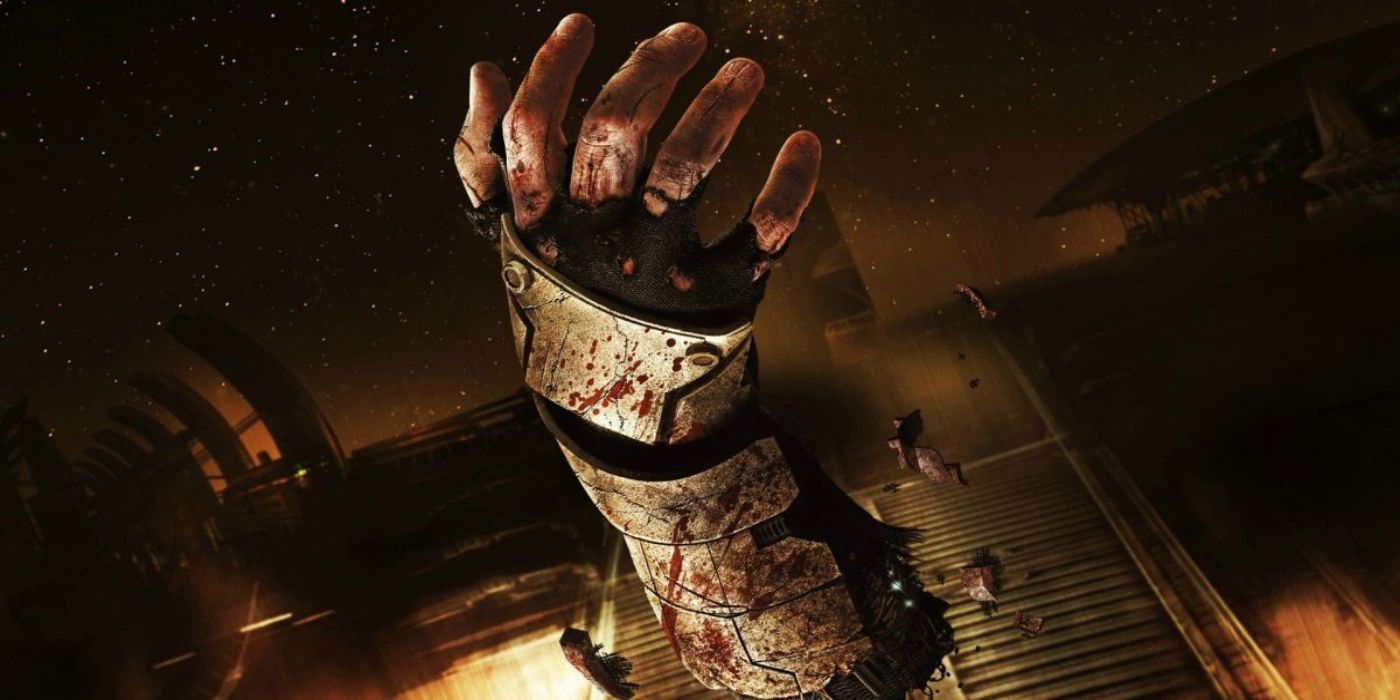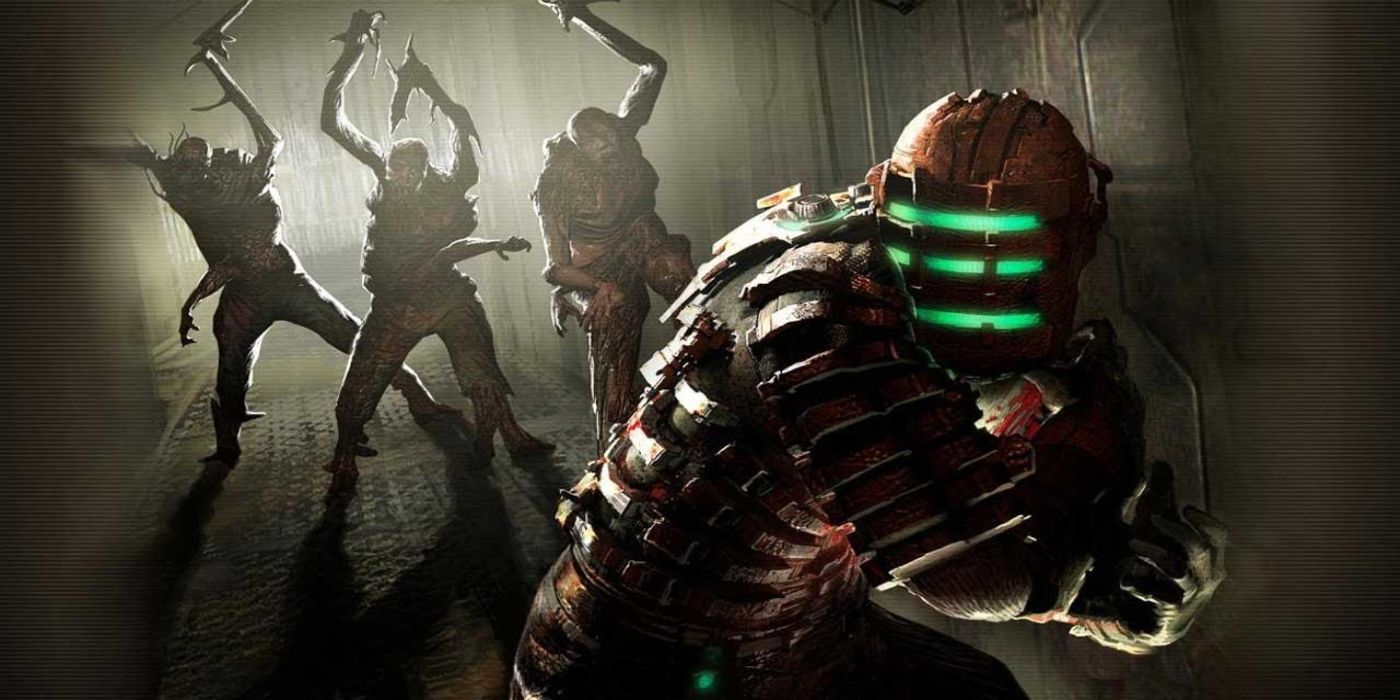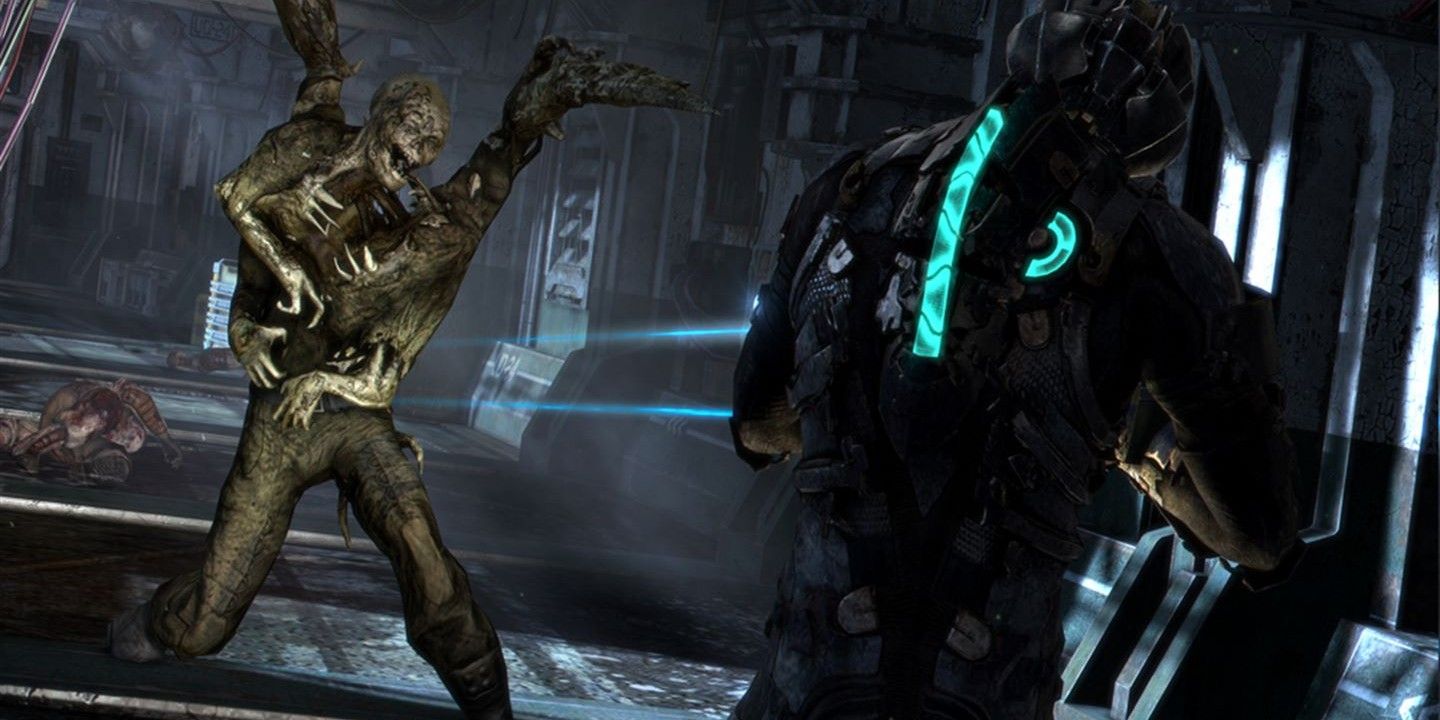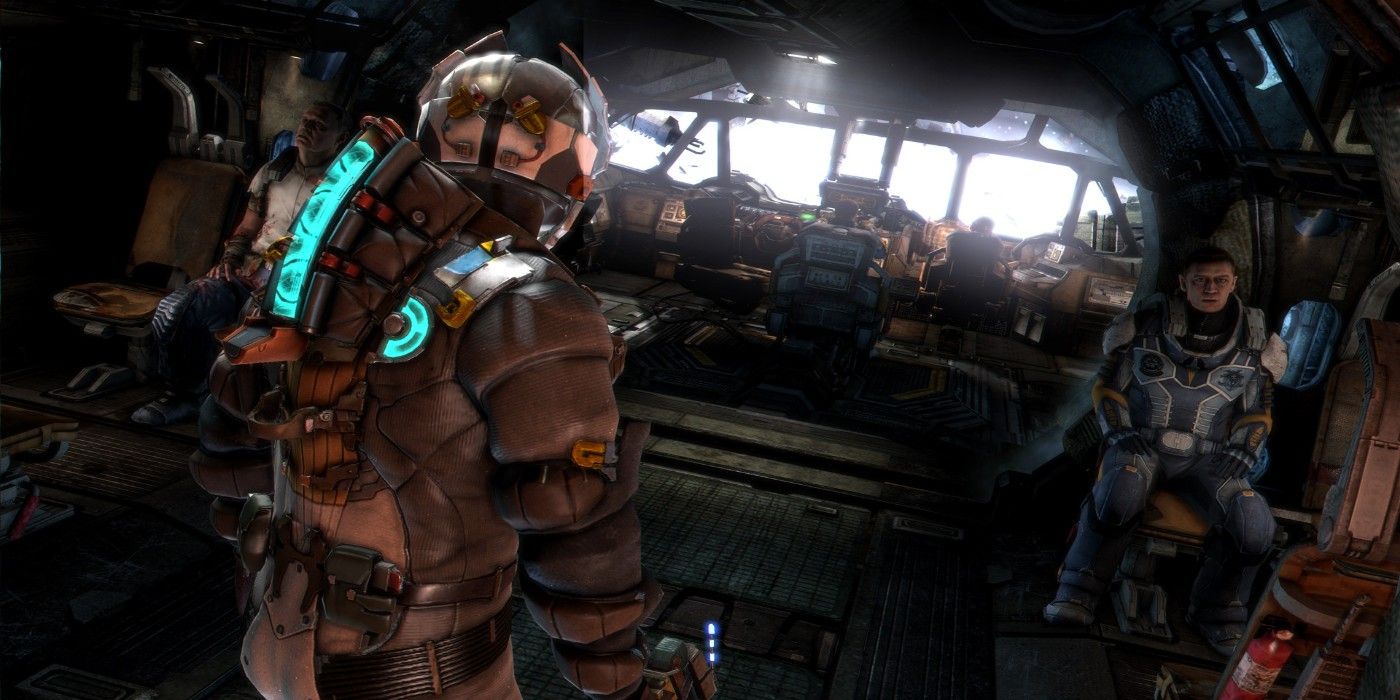This Horror Game Is Basically Begging For A Movie Adaptation

When it comes to adapting video games for the big screen, Hollywood's record leaves substantial room for improvement among both critics and audiences. Some will argue that filmmakers are too risk-averse when adapting games, others will suggest they stray too far from the source material. Nevertheless, with the recent announcement that Ghost of Tsushima is being adapted into a movie, the process shows no signs of slowing down. One franchise that is crying out to be adapted is Dead Space.
The acclaimed survival horror series has been lying dormant since 2013 after Dead Space 3, waiting to be woken from its slumber after EA shuttered studio Visceral Games. Despite EA lining up Marty Bowen and Wyck Godfrey to produce a live-action movie, the series has only spawned a couple of animated movies and graphic novels. Regardless of this, the original game features all the raw ingredients required for a modern horror masterpiece.
Dead Space takes place aboard the USG Ishimura, a stricken ship known as a 'planet-breaker' which has ceased communications while broadcasting a distress signal. Silent protagonist Isaac Clarke and the rest of his emergency maintenance team arrive to offer assistance and quickly discover the horrors that have transpired on the ship. While any movie adaptation could opt for a different approach, much of the terror of Dead Space comes from an escalating sense of dread after being shown what lurks in the shadows within the opening chapter. Sci-fi horror is a genre mash-up that has produced some of the biggest critical and cult success stories in cinema history and during development one of the earliest inspirations was Event Horizon, the cult sci-fi favorite that was way ahead of its time.

It's easy to see how this manifests in the ship's gothic architecture, along with Isaac's suit, as the game's infamously oppressive atmosphere is conjured by darkened compressed corridors, which bridge various sectors together. Though the series is set in the 2500's, the developers were conscious of avoiding falling into the trap of looking too sleek and clean. The resulting dank metallic backdrop creates a sense of realism, despite its fantastical and far-off future setting.
Sound design is one of the fundamental strengths of the game and with the recent success of A Quiet Place, the Dead Space universe would offer a similarly unique opportunity for the big screen to tease the audiences with a minimalist soundtrack that gradually increases the tension. The rustic environment creaks and clanks with every footstep, as the metallic surroundings often warp under the pressure of gravity. It makes for the perfect setting for a modern horror director to play in, particularly when the monsters lurking are repurposed humans.
Born from an infection, the primary antagonists of the Dead Space series are the terrifying Necromorphs. Originally human, the reanimated and grotesquely deformed creatures are some of the most frighteningly designed in video game history and could easily rival some of the best horror villains. Co-designer Ben Wanat's guiding philosophy was to present the human form "ravaged by a violent transformation that literally ripped it inside out" and that principle helps elicit a particular type of fear due to their familiarity.

Though they are alien in some respects, traces of the human host remain in the various Necromorph forms. Even their shrieks sound reminiscent of a human scream, adding a whole new dimension to the dilemma a movie audience feels when protagonists check out a creepy noise in a horror movie. The most recognizable, known as the 'Slasher', sports a human head missing a jaw with mantis-like scythes made from human bone. Others, like the 'Divider', have been stripped of their internal organs and elongated, but their leftover toes and feet are still distinctly human. These remaining traits bear some resemblance to John Carpenter's titular monster from The Thing and make them all the more frightening.
It's often said that in cinema, once you reveal too much of the monster it stops being scary. One recent example is A Quiet Place, where the monsters aren't so terrifying to look at on-screen, it's the tension created by the fact that making noise results in certain death. However, the unpredictable nature of the Necromorph transformations, due to their highly mutable form, can result in some truly heinous creations and would provide filmmakers the opportunity to come up with some gnarly designs. Practical effects have become more favorable in recent years, which would help ground these monsters in reality.
Killing a Necromorph is equally as gruesome, dependent on severing its limbs, rather than the trope of shooting it in the head. This design constraint introduced the 'Plasma Cutter' handgun which would easily feel at home on the big screen as both a uniquely designed and functional weapon. While the Necromorph transformations can be violent, their demeanor is relentlessly aggressive. Their purpose is to accumulate more corpses to spread the infection, making them formidable foes that evoke the perfect sense of dread that would keep audiences on the edge of their seats.

Despite the amount of death and resulting sense of isolation, the surroundings feel recently lived in. However, the few humans you do encounter are predominantly dogmatic individuals, preaching about a prominent religion called Unitology and how humanity's ordained next step was evolution into the vicious Necromorphs.
There's a duality here between the monstrous physical shapes the human form can be contorted into and the heinous acts that humans carry out in the name of something which they believe in, but don't fully understand. One of the series' more underrated qualities is the strength of its lore, though the moment-to-moment horror is engaging enough to stand alone without it. This grants greater substance to the plot which is ripe for filmmakers to explore the conspiratorial aspect of Dead Space thanks to the malevolent corporate entities that influence proceedings behind the scenes, allowing sub-textual commentary on the likes of religion, belief structures, and capitalism.
Considering the silence surrounding the Bowen and Godfrey helmed adaptation, along with the fact that the franchise has laid dormant for nearly a decade now, chances are slim that a Dead Space movie will ever see the light of day. What makes that all the more frustrating is that both the horror genre and the feature film landscape have transformed since EA announced plans for the movie adaptation all the way back in the late 2000s. The decline of classic series like Alien opens the floor to new contenders, were a Dead Space movie released in today's climate it would likely thrive.

Post a Comment